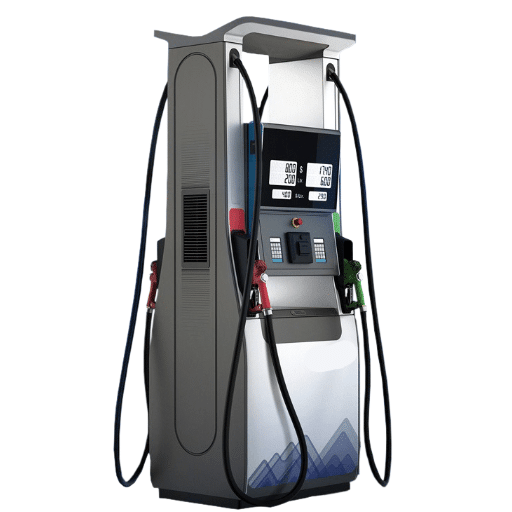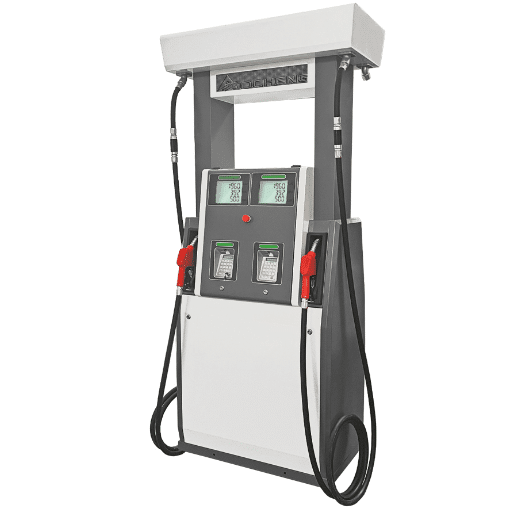The electric vehicles (EVs) are fast becoming mainstream as a mode of contemporary transport, offering what is essentially an environmentally friendly and sustainable method of driving. In turn, as more and more people are switching to EVs, questions concerning the workings and best operating practices are popping up more often. Can you leave an electric vehicle on while charging? This captivating topic revolves around the peculiarities, safety, and convenience of EVs, which every EV owner should understand. Here, we will walk through the ins and outs of charging your EV, trying to demystify the procedure while bringing forth some useful tips that can help you make better decisions. Whether you are a rookie or have some good driving experience, this guide will shed light on what happens when the car is left on while charging, giving you information on how to achieve an efficient and safe charging practice.
Understanding EV Charging
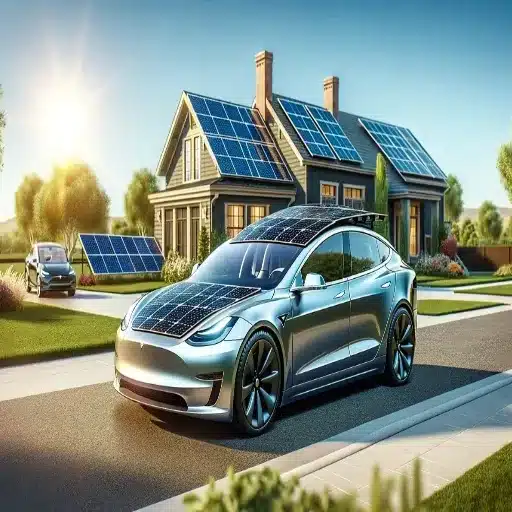
An EV can be so charged with its driving features on, but with so many issues to keep in mind. In most newer types of EVs, a certain amount of charging is permitted while some functions, such as climate control or infotainment systems, might function independently; this, furthermore, is negated by any kind of movement of the vehicle for safety as soon as it is plugged into a charging station. For the best working conditions and maximum safety, always refer to the user manual regarding particular guidelines for a certain make and model.
What Does Charging an Electric Car Involve?
Charging an electric car is all about lighting up the comprehension of the different charging options available, the levels of chargers, and the time needed for a full charge. There are, more or less, three levels of charging stations available for EVs:
These are the most basic types of charging that use an ordinary 120-volt household outlet. While the outlets are everywhere, they do not provide very much speed, giving a drop of between 2 and 5 miles of range per hour. Level 1 charging is best for overnight time-gaining or the little driving-hungry.
Level 2 charging comes with a 240-volt outlet and provides considerably less charging time, being at least 10 miles and as much as 60 miles of range per hour. These stations can be set up either at home or on the street at public charge points. They stand as the favorite pick of most EV owners, for the perfect blend of speed and ease.
Essentially operating as quick charging lines – typically on highways or commercial zones – they can provide from 50 kW to more than 350 kW. Thus, based on the ability of the vehicle and charger, DC Fast Charging allows for a fast top-off of 80% during 20 to 30 minutes of time. Occasionally, frequent Fast Charging will also increase heat and possibly cause increased wear on the battery over time.
To add, the State of Charge (SOC) of the battery, ambient temperature, and onboard charger efficiency of the EV provide the granularity to the charging experience. Many of the modern EVs and smart charging stations have a mobile app through which one can monitor charge progress, set charging for off-peak hours to save money, and find another station nearby. With more investments coming into the infrastructure, the public charger network is now rapidly expanding, and hence making life easier and more practical for every driver from everywhere.
How EV Charging Stations Operate
Electric vehicle (EV) charging stations deliver power to recharge the battery in an electric vehicle. This power may be in the form of alternating current or direct current, with the type of charger affecting the charging rate and efficiency. The three primary levels of chargers for electric vehicles are:
| Charging Level | Voltage | Range per Hour | Typical Location | Best For |
|---|---|---|---|---|
| Level 1 | 120V | 2-5 miles | Home outlets | Overnight charging |
| Level 2 | 240V | 25-30 miles | Home, workplace, public | Daily commuting |
| DC Fast | 400-800V | 80% in 20-40 mins | Highways, commercial | Long-distance travel |
Infrastructure Growth: EV charging stations are going up exponentially in number worldwide. According to data in early 2023, it says that any sort of EV charging infrastructure had surpassed a count of 4.5 million public chargers, concentrated largely in China, Europe, and the United States. Faster DC charging stations grew by over 40% just in the past year, the International Energy Agency (IEA) said, noting that this was stimulated by the rapid adoption of EVs.
In more professional terms, smart technology and communication means are often embedded in advanced EV chargers. There are now automated pay systems, status update features, and corridors for reservations that even link solar energy sources. In fact, these smart features really help improve the user experience while contributing to sustainability by enhancing charging through clean energy. Worldwide development of the network of charging stations remains relevant to fostering larger EV uptake and reducing carbon emissions.
Charging Times for Different EV Models
Charging times for electric vehicles drastically vary by model, battery size, and type of charger used. Here are some examples of usual charge times for certain EVs:
Level 2 charging in an at-home environment will lead to a 6-8-hour recharge capacity of the Tesla Model 3. Careful use of the Tesla Supercharger may lead to an 80% charge in 20-30 minutes.
Charging a Nissan Leaf, equipped with a standard 40-kWh battery, will take about 8 hours using a Level 2 charger. Using a CHAdeMO fast charger, an 80% charge will be achieved in about 40-45 minutes.
The Mustang Mach-E, with the extended range battery, takes about 10 hours via Level 2 at-home chargers for a full charge. While on the DC charge, it would give a fast top-up of 52 miles of range in 10 minutes.
Supports ultra-fast charging capabilities, permitting an 80%-in-approx-18-minute charge time on a 350 kW DC fast charger. On a Level 2 charger, full charging takes about 6-8 hours.
Charging with a Level 2 charger takes around 9-10 hours for a full 100KWh charge. Fast charging will add 100 miles to the range in about 30 minutes.
Keep in mind that environmental factors like temperature and the current state of the vehicle’s battery could affect charging times. Aside from that, we also have faster charging hardware to look forward to, ensuring EVs increasingly fit into everyday life.
Charging While Driving
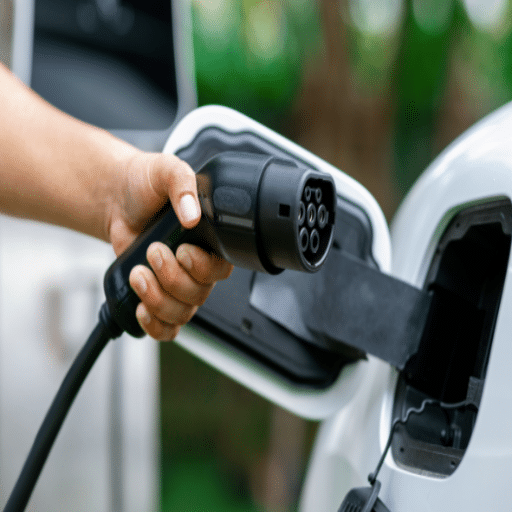
Presently, EVs can’t be charged on the go. Charging entails the vehicle being stationary and plugged into a charging station. Otherwise, some EVs come with a regenerative braking system that provides some battery recharge by taking kinetic energy and turning it into electricity during braking or deceleration. It can extend the range of the vehicle, but cannot be used in place of conventional charging methods.
Can You Charge an EV While Driving?
Charging an electric vehicle while on the road is mostly a theoretical idea; however, some promising technologies are set to make it a reality. On the one hand, an approach involves having roads embedded with inductive charging coils so that the coils can transfer energy wirelessly to EVs equipped with compatible receivers passing over the surface. Very often called “dynamic electric road systems” (ERS), the system has spawned trials in countries such as Sweden and South Korea.
For instance, a section of road in Gotland, Sweden, has been used to see if wireless transfer of energy over a distance is feasible; while in motion, a vehicle would recharge its batteries. In a pilot setting in South Korea, a somewhat similar system was successful in wirelessly charging electric buses while they operated on certain routes. Though promising, such systems are still in the trial phase, and large infrastructure investment coupled with upgrades in vehicle technology would be needed for adoption on a wider scale.
Another method concerns solar-powered EVs, which use solar panels built into the body of the car to capture solar energy. Such systems may provide supplemental power to the batteries; however, little energy is converted to help in charging the vehicle while driving, especially on cloudy days or at night. But that is what innovations are trying to improve on-whether, over time, the efficiency of solar cells becomes good enough to commercialize.
New proposals aside, statistically, most EVs depend on stationary charging; the infrastructure plus technology for in-motion charging are simply not scalable or cost-effective yet. For now, the only way to recover a mere fraction of energy while driving is regenerative braking, and a lot more is to be done before continuous charging on the road is made into reality.
Benefits of Charging While Driving
Reduced Range Anxiety
One of the said advantages is that the technology reduces range anxiety for many EV owners big concern today among drivers. Inductive charging embedded within roadways is one of the dynamic charging systems and may enable continuous EV recharging, thereby limiting stops at charging stations.
Smaller Battery Requirements
Studies say that electrified roads may have the ability to drastically reduce the size and cost of EV batteries since vehicles will no longer require big batteries for carrying out long-distance travel. In 2023, according to a study from the Swedish Transport Administration, battery size may be reduced as much as 70% through dynamic charging, making cheaper and lighter EVs possible.
Grid Load Management
Using charging-friendly roads may alleviate some of the power grid’s stress. Instead of high spikes of power draw normally seen during stationary charging, the dynamic systems would ensure a relatively continuous flow of energy and balanced demand, optimizing grid management and reducing peak loads.
Sustainable Infrastructure
This technology promotes mass adoption of sustainable mobility infrastructure. Coupled with renewables, such as solar energy and wind energy, such a system manages to completely minimize the carbon footprint of EVs.
Regenerative Braking and Charging
Regenerative braking is an important technology that aids higher efficiency in EVs through the conversion of kinetic energy into electrical energy during deceleration, wherein the energy is stored in the vehicle battery for later use in running the motor, thus increasing overall energy efficiency and driving range. Research points out that about 10-30% of the entire amount of energy exerted on driving is harnessed by regenerative braking systems, the exact percentage depending on driving conditions, speed, braking manner, etc.
Advanced charging, when integrated, complements regenerative braking systems and converts energy wasted into a sustainable and innovative deterrent. Studies also show that EVs implementing high-efficiency regenerative braking systems together with battery management software are indeed able to reap notable energy savings compared to conventional vehicles.
In addition, innovations in regenerative braking are improving battery life. These systems limit battery wear by lessening reliance on outside sources for charging and by cycling energy directly, hence aiding sustainability. For carbon emission reduction programs in cities, future networks with EVs having solid charging and regenerative braking capabilities are a very viable and impactful solution.
Leaving Your EV On During Charging
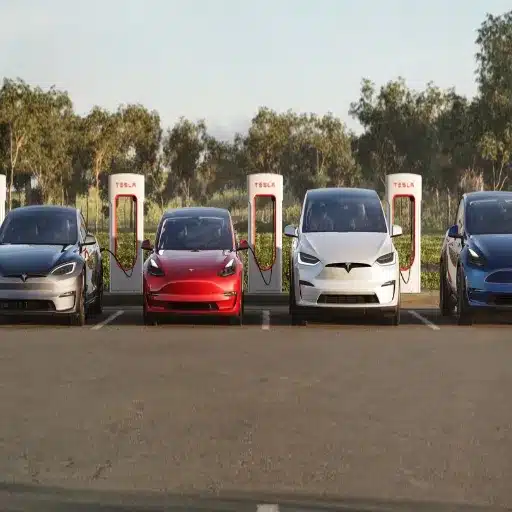
⚠️ Important Safety Information
Leaving your EV on while charging is generally not recommended. Most electric vehicles are designed to turn on their systems automatically during charging, where having the vehicle on may affect this course. An added matter may be that an EV left on may launch systems not needed then, such as heating or cooling, which can reduce charging efficiency. Always get information from the user manual of your vehicle for exact instructions, as there may be recommendations that vary by make and model. For best functioning and safety, the EV should be switched off while charging.
Is it Safe to Leave Your Car On While Charging?
Leaving the vehicle on while it is charging is generally not advisable because of factors that include lowered efficiency of charging and potential safety hazards. Contemporary EVs are designed to promote optimal charging with the vehicle off. When the vehicle is left on, some auxiliary systems such as climate control or entertainment systems may also stay on, consuming power and thus extending charging time. Furthermore, some vehicles even limit the flow of charging current when the vehicle is not fully off, hence further detracting from efficiency.
The other important consideration is safety. Charging the vehicle while it is on bestows a condition of heat generation or even a degree of uncertainty pertaining to the vehicle’s operational status when an accidental engagement occurs. Most EV manufacturers across the industry strongly recommend turning the vehicle off when charging for safety and efficiency reasons. Tesla, Nissan, and Hyundai will give examples suggesting that having the car off will allow better communication between the onboard charger and battery management systems.
Always consult your own vehicle user manual for the specific directions of your EV, as some models may differ. It is important to note that with the vehicle off while charging, battery health is optimized, safety is enhanced, and the charging process is made more efficient.
Potential Risks of Leaving an EV On
Risks and Concerns
- Battery Drain: Auxiliary systems like heating, air conditioning, or infotainment systems can continue functioning, resulting in lower efficiency and extended charging time
- Overheating Risk: Electrical systems remain operational, generating more heat and potentially straining thermal management systems
- Security Vulnerabilities: Vehicle left unattended with systems on is more susceptible to theft or unauthorized use
- Electrical Faults: Rare cases of fires have been reported related to electrical faults during extended periods with vehicles left on
Benefits of Turning Off
- Enhanced Battery Life: Shutting down during charging can improve long-term battery health and efficiency
- Optimal Charging: Better communication between onboard charger and battery management systems
- Reduced Power Cycles: Lower unnecessary power cycles provide better thermal control
- Improved Safety: Following manufacturer guidelines ensures maximum safety during charging
Manufacturer Guidelines on Charging
The manufacturers always emphasize the importance of following charging protocols so as to guarantee that the EV battery is appropriately charged for its intended purpose and will have a longer shelf life. Generally, it is advised not to charge the battery constantly to 100%, except when a long-distance trip demands it, as studies have found that keeping the charge state mostly between 20% and 80% can seriously prevent the fast degradation of an EV battery over time because the cells least undergo stress in this range.
Full-time use of Level 2 charging (being standard AC charging) is recommended, as it is the most forgiving of battery life when compared to a fast charge used all the time. All DC fast chargers provide convenient pluses for long-distance travel, but they tend to generate excess heat if used too frequently and rapidly age the battery. Further, it is suggested to maintain the battery at moderate temperatures during the actual charging procedure; many models will come with built-in thermal management systems.
Avoiding prolonged periods of a complete discharge or plugging the vehicle into a charger for long hours after it attains full charge adds another battery health benefit. These maintenance practices, combined with software updates recommended periodically by the manufacturers, guarantee operational reliability and provide your EV with a longer lifespan.
Different EV Models and Their Charging Features
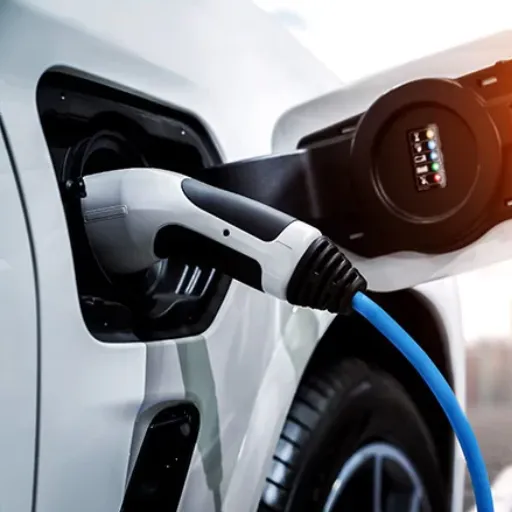
Thanks to various exposure charge capabilities in the different EV models, these vehicles cater to divergent user needs. Entry-level specs, like said Nissan Leaf, tend to accept slower Level 1 and 2 charging but may also comply with DC fast charging to speed up its turnaround time further. The premier specs, such as the Tesla Model S, provide access to the widely spread Supercharger network for speedy charging on long-distance trips. Other competitors, like the Hyundai Ioniq 5 and Kia EV6, have state-of-the-art 800-volt technology, which allows for ultra-fast charging when used with compatible chargers, thus drastically reducing downtime. Most recent specifications will also feature smart charging capabilities: for example, scheduled charging to optimize energy utilization and lower charging costs.
Overview of Popular EV Models
The Tesla Model 3 is still considered the prime EV in the market, maintaining the balance of price, range, and technology. Its range is listed as a maximum of about 358 miles on a single charge (Long Range model), while Superchargers provide fast charging to this car. It comprises the Autopilot system of Tesla, which has advanced driver-assist technology, and with over-the-air software updates, maybe even be better and faster with passing time.
The Hyundai Ioniq 5 distinguishes itself with its futuristic design and innovative features. The advertised range is between approximately 220 and 300 miles, depending on its 58 kWh or 77.4 kWh battery pack. The vehicle has 800-volt ultra-fast-charging capability, which can restore around 68 miles in just 5 minutes, given ideal charging conditions. It has a spacious interior and offers an innovative V2L (Vehicle-to-Load) feature that powers external devices, enhancing the car’s versatility.
Offering the ultimate fusion of performance and practicality, the Ford Mustang Mach-E Extended Range, especially, will grant you a respectable 312 miles of range. Even if the car’s sporty good looks and a racing pedigree ensure a loud presence, the Mach-E is all about subtlety with its quiet electric powertrain and thrilling acceleration. At its infotainment helm sits Ford’s SYNC 4A system, providing advanced connectivity, and it also gives drivers access to vast public charging networks with route planning capabilities.
Sharing its platform with the Hyundai Ioniq 5, the Kia EV6 gives way to an 800-volt charging capability and ranges close to 310 miles. It thrusts forth a dynamic driving experience, PMing its performance and eco trims. The EV6, with its bidirectional charging capabilities, is able to act as a power backup in cases of emergencies. Modern practical interior design makes the EV6 a perfect fit for those who cherish style all the way with environmental consciousness.
Chevrolet Bolt EV continues to be one of the more inexpensive electric vehicles that one can have. Ranging with a maximum mileage of up to 259 miles, it makes for a wonderful choice for everyday work and another choice for a longer drive. The petite cabin with nimble handling favors city driving. The Bolt EV also specifies Energy Assist in the myChevrolet app to help owners find nearby chargers and monitor energy usage more efficiently.
These automobiles speak volumes about the ever-evolving world of EVs, giving their consumers an option of performance balanced with efficiency and innovation, among others, to suit their individual needs.
Charging Capabilities Across EV Brands
Charging potential substantially varies by EV brand, with advancements making them further convenient and efficient. Most major EV manufacturers are now part of fast-charging networks; Lasercharging can add 200 miles of range in just 15 minutes of charging. The latest V3 Superchargers, at 250 kW peak rate, hence offer one of the quickest charging options at present.
For anything other than Tesla vehicles, maybe Electrify America or ChargePoint networks will satisfy. Electrify America provides Ultra-fast chargers with ratings of 350 kW, which ensure that compatible EVs such as the Porsche Taycan and the Hyundai Ioniq 5 will quickly get a meaningful range under 20 minutes. ChargePoint provides Level 2 and DC fast charging, with more than 225,000 charging ports across the world, catering to virtually all makes and models.
With newer EVs offering higher charging capacities that include the Lucid Air’s 924-volt architecture charging at 300 kW, the Ford Mustang Mach-E supports fast charging at 150 kW, which replenishes 59 miles of range in only 10 minutes. Most EV brands also use apps and tools to assist drivers in locating chargers compatible with their vehicles, following the charging session, and getting real-time updates on charging speed.
The movement toward standardization is gaining momentum under initiatives like CCS used by BMW, Volkswagen, Ford, and other brands, seeking higher compatibility across different charging networks so that it becomes easy for EV owners. By continuing to build towards better charging infrastructure and vehicle compatibility, the EV brands are enhancing and driving modernization toward greater acceptance.
Regenerative Braking and Its Role in Charging
With regenerative braking, as the name suggests, kinetic energy is converted into electrical energy for the braking process. Rather than releasing the energy as heat conventional method of braking-regenerative braking harnesses this energy and replenishes it into the vehicle’s battery for future use. The additional distance driving that a car might earn and less wear and tear on the brake pads are some of the advantages.
Because the regenerative braking system has experienced more developments recently, it has gained substantial influence. It has been observed from studies that regenerative braking assures almost a 10 to 20 percent reduction in energy consumption for an EV, subject to the vehicle model and driving conditions. Urban environments, with lots of stops and goes, optimize their usefulness since every braking event implies battery recharge.
To improve the efficiency of regenerative braking systems, manufacturers have also opted for innovative solutions. Some electric vehicles allow drivers to choose the degree of regenerative braking exerted on the vehicle via selectable drive modes so as to optimize energy recovery while offering a comfortable driving experience. Thanks to this development, regenerative braking continues to remain significant in making electric vehicles more user-friendly, efficient, and green.
Best Practices for EV Owners
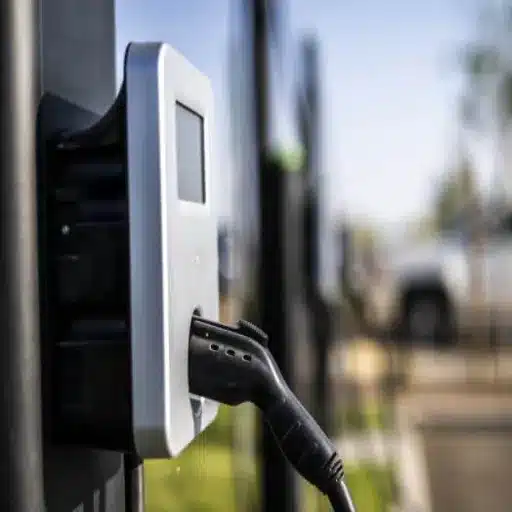
Essential Guidelines for EV Ownership
Be aware of the locations that offer charging facilities along your route and make sure your EV has sufficient range to travel to these destinations comfortably.
Avoid battery levels dropping regularly to very low levels, or charging to 100% unless necessary. The battery should be held within the 20-80% level for best life.
Make it a habit to maximize regenerative braking for energy recuperation when in stop-and-go traffic or when going downhill.
Keep up with maintenance concerning tire pressure, brake checks, and software updates according to the manufacturer to have an efficiently performing EV.
A little bit of aggressive acceleration or speeding up and slowing down wastes energy and reduces the amount of energy that goes into a battery.
Optimal Charging Habits
Charging and maintenance habits extension, beneficial for maximizing your EV’s battery life:
Fast charging can be very convenient, but it can stress the battery if used frequently. Use fast charge for emergencies or when really necessary on a long trip.
Always try to maintain the battery charge levels between this window, as overcharging and deep discharge can harm the battery health.
Slow charging at home overnight is good for battery health and also helps save on electricity rates when they are at their minimum.
Too hot or too cold-to extremes-goes against battery efficiency. Try keeping your EV in shaded or covered areas while charging.
In some cases, battery performance and charging habits may be optimized through software updates put forth by EV manufacturers, which is why keeping the vehicle updated is important.
Adopting these habits will help maintain your EV battery’s performance and extend its overall life.
Monitoring Charging Status
The means for the observation of my EV charging setup are simple and efficient, with energy application being paramount. I usually check the progress of the charging from either inside the car on the dashboard or by reviewing its mobile app. Both provide me with the present charge level and the estimated time required for the total charge to be fulfilled. Knowledge empowers me to resist overcharging the car while also helping me plan my trips around this process to keep the batteries healthy.
Choosing the Right EV Charging Equipment
The selection of proper EV charging equipment is necessary for convenience, efficiency, and battery health in the long term. Consider your own charging needs based upon your daily driving habits. Level 1 chargers, working through a household outlet, are considered the light option. Level 2 chargers give faster charging but require a dedicated 240-volt circuit. In case there is a need for faster charging, public DC fast chargers might be considered, although those might be less friendly to the battery as time goes by. Consider whether a charger is compatible with your particular EV model and whether it is UL-certified for safety. Other considerations eschew the value of kick stickers: Wi-Fi connectivity, smart scheduling, and energy monitoring. It is better to buy reliable charging equipment, which has good reviews, so that you can actually save time and money.
Conclusion
Understanding the intricacies of EV charging is essential for every electric vehicle owner. While the technology continues to evolve rapidly, following manufacturer guidelines, adopting optimal charging practices, and staying informed about safety protocols will ensure you get the most out of your electric vehicle. Remember, when in doubt about leaving your EV on while charging, it’s always best to turn it off and consult your vehicle’s manual for specific guidance.
Reference Sources
Experimental Validation of a Battery Dynamic Model for EV Applications
Frequently Asked Questions (FAQs)
Can I charge my EV while it’s charging?
Yes, you actually can charge your EV while it is on. However, if one uses the air conditioning or heating, this may decrease the rate at which the car charges due to these operations drawing power from the battery.
Does charging while driving affect battery life?
Charging while driving is not recommended; it may cause the battery to fail. Plenty of EVs prevent you from driving away while plugged into a charge cable.
How does regenerative braking work on EV models?
Regenerative braking allows the electric motor in several models of EVs to act as a generator when braking, thus converting kinetic energy to electrical energy for battery charging, thereby enhancing system efficiency.
Will high-power charging impact other functions?
Using high-power charging may affect other systems in your EV. For example, running your air conditioning system while charging might slow down the charging process as both are fed from the same power source.
What happens if I use the heater while charging?
If you activate the heater while your car is charging, it will slow down the process, meaning the heater consumes lots of electricity, diverting lots of power away from intended for battery charging.
Can I use a public charging station while my EV is running?
Yes. While your EV is running, you can use a public charging station without worrying. Nevertheless, using some functions like A/C or extra electrical apparatus might slow down charging.
Do all EV manufacturers permit charging when the vehicle is turned on?
Most of the car companies design their EVs so that they can be charged while the vehicle is on. In some specific models and situations, charging a vehicle while some systems are active may be discouraged.
How does the safety interlock function during charging?
The interlock is a key safety feature whereby a user is not allowed to drive away while still being connected by a charge cable to the EV. The safety system is provided with electromagnetic coils generating electromagnetic fields during charging to provide safe operations.
Will my EV slow down while charging other things?
Yes, if you have other things or features much in a lot of electricity, your EV will surely slow in charging. It is best not to charge while using those features, as they take a great deal of electricity themselves.

